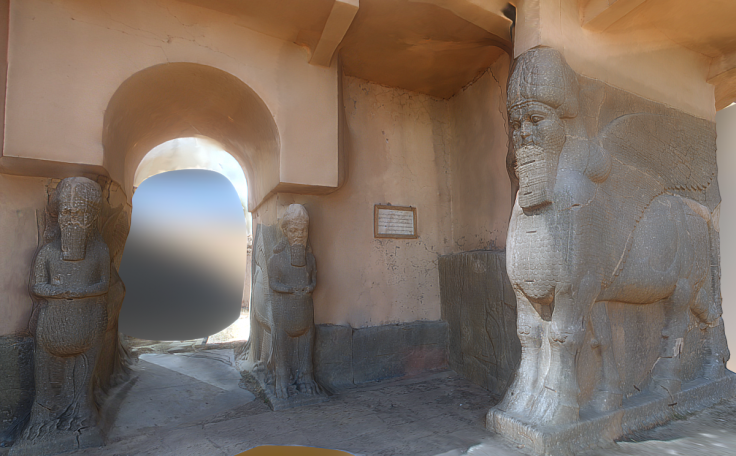Ancient Mosul museum artefacts destroyed by Isis recreated with 3D technology and tourist photos

3D models of artefacts destroyed by Islamic State (Isis) and reconstructed with a pioneering crowdsourcing system are going on show at a New York museum. Scale reproductions of four ancient pieces are to be displayed at a private event at the Museum of Arts and Design in Manhattan, just over a year after the originals were smashed by IS (Daesh) militants that stormed a museum in Mosul, Iraq.
The items are 3D prints of virtual models created by a group of archaeologists by applying digital technology to simple tourist photos. Digital Cultural Heritage PhD students Chance Coughenour and Matthew Vincent embarked on a bid to preserve lost heritage last year, after IS released a shocking video showing its fighters taking sledgehammers to Assyrian statues dating back to the 7th century BC at the Mosul Museum in an attack described as a "cultural tragedy" by Unesco.
The pair launched Project Mosul, an open source platform where volunteers could use pictures uploaded by members of the public who had visited the museum in the past to create an online version of the archaeological treasures it contained.
Soon people started sharing images of heritage destroyed elsewhere, like Roman temples blown up by IS in Syria or ancient Hindu statues damaged by the 2015 earthquake in Nepal and the project was renamed Rerkei - recreate in Esperanto - to underscore its new, wider scope.
One year on, Coughenour and Vincent have received more than 5,000 photos that have been used to partially recreate some 44 items. Four of these have been turned into physical objects with a 3D printer and are to be unveiled on 28 April in Manhattan, as the duo launches a new more interactive website, Reclaimhistory.org, created in cooperation with marketing company Ogilvy & Mather.
"It's a way to talk about what has happened with cultural heritage and what digital technology can be making an impact on preserving some of it," Vincent told IBTimes UK.
Among the printed items is the Lion of Mosul, a limestone statue of a colossal Assyrian guardian lion from about 860 BC that used to lay outside the entrance of the Temple of Ishtar in the city of Nimrud, Iraq. There is also an ancient statue of a priest from Hatra and two tablets, dating back from to the 1st and 2nd century AD, with bas-reliefs of Nirgul, god of the underworld.
Hatrene priest by a6b8 on Sketchfab
They will be exhibited along two other pieces from the ancient Syrian city of Palmyra recreated by a similar initiative named NewPalmyra.
Coughenour and Vincent said they are against using 3D printing to replace destroyed artefacts, explaining that their initiative serves only to prevent memory of cultural heritage from getting lost.
"Partially reconstructed pieces become a sort of commentary on loss and the preservation", said Vincent. "[It is a way to] confront the issue that we are losing this heritage and it is truly gone, without sparking the idea that all we have to do is push a button on a printer and we can pull the heritage back out instead."
The event at the Museum of Arts and Design comes a week after a scale replica of a destroyed triumphal arch from Palmyra was put up in central London, drawing criticism over its political and archaeological implications.
© Copyright IBTimes 2025. All rights reserved.




















